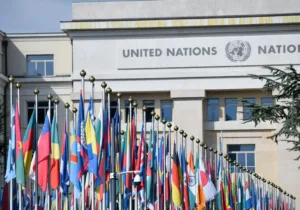The western slave trade ran its course for 400 years and put approximately 12.5 million people into slavery. Yet at this very moment roughly 25 million people are caught in forced labor and sex trafficking.
Humans have never lacked imagination when it comes to oppression. The 25 million modern slaves in the world today include the unpaid brick kiln worker in India, the Uighur Muslim picking cotton in Xinjiang, the underage Mexican immigrant forced into prostitution by cartel members in Arizona, and the unpaid laborer burning charcoal in a remote Brazilian rain forest. The common thread across these scenarios is the use of force, fraud, or coercion to keep victims under control and extract profit. This is the defining feature of human trafficking, and the two major forms recognized in the United States are forced labor and sex trafficking. Fortunately, these heartbreaking, uncivilized practices no longer go unnoticed. Sweeping advancements have been made over recent decades toward the eradication of modern slavery.
Despite the overwhelming magnitude of the problem, contemporary responses to modern slavery are characterized by unparalleled consensus and collaboration. This is one of the rare places where political differences are (rightly) set aside in the name of prioritizing the vulnerable. Interagency cooperation is at an all-time high in the United States. The question of how to combat modern slavery is seeping into high-politics, prompting foreign policymakers to think more creatively about how to achieve multiple objectives.
Across the globe, the number of anti-trafficking organizations has exploded, and these groups offer a range of services to victims that governments are ill-equipped to provide. The financial sector is finally starting to wake up to pervasive slave labor in international supply chains—labor that generates $150 billion in profits annually. Supply-chain slavery is a looming frontier, one closely connected to the horrors of state-sanctioned forced labor. Yet this past year has been one of increased pressure on flagrant violators, such as China.
In the 1990s, many countries did not have anti-trafficking laws on their books. But today nearly every country in the world has at least some kind of domestic anti-trafficking legislation in place. This is a critical step—law that does not exist cannot be enforced. Speaking of which, the number of convictions has generally been increasing over the last two decades. The pandemic translated into backsliding on law enforcement indicators but prompted swift innovations in the technologies and techniques used to track down traffickers
As laws made their way onto the books, certain countries exhibited dramatic improvement in their compliance with the widely accepted anti-trafficking minimum standards outlined in the United Nations Palermo Protocol. Some of the more unlikely characters out of the 28 countries listed as fully compliant include Colombia, Georgia, Guyana, Namibia, the Philippines, and Bahrain. Singapore, situated in an epicenter for trafficking, is another notable achievement. Remarkable periods of progress also occurred in Nicaragua, Belarus, Bolivia, the Dominican Republic, the Philippines, and Mexico, though several of these countries are now backsliding.
The chief cause for these improvements is the coercive diplomacy strategy deployed by the United States Department of State. Nicaragua, for example, became the Central American leader on anti-trafficking from 2010–14 shortly after the US threatened it with sanctions for noncompliance with international anti-trafficking standards. Mexico permitted tremendous foreign influence in its national anti-trafficking legislation and gave Immigration and Customs Enforcement (ICE, the agency responsible for upholding US anti-trafficking laws) liberty to come in and execute a wide range of law enforcement programs. Mexico allowed for these openings in exchange for economic and security partnerships. Even Russia gained traction in the 2000s, thanks to national anti-trafficking laws pushed through the Duma as a means to alleviate American pressure.
Time and time again, countries improve only when the US tells them to improve. This is not because all other governments are apathetic, or because anti-trafficking groups are failing. Rather, it is because modern slavery boils down to a political will problem. Elites usually need materialistic incentives and penalties to get them to act, and the US is the player armed with these tools. Broad coalitions of governments, international institutions, and civil society groups complement American enforcement, but coercion is often the spark needed to jump-start advancements.
What undermines headway on anti-trafficking? A lack of American credibility. One need only to look at recent, shocking events in Arizona where ICE permitted its agents to repeatedly receive sexual acts from trafficking victims under the guise of building a case. The agency’s unwillingness to properly reprimand the dishonorable cluster of low-level agents is the kind of blow that could cut the bottom out of continued American leadership on anti-slavery. More broadly, the US must safeguard the potency of her coercive diplomacy approach. Successful application of strategy depends on holding noncompliers to account and maintaining the material power needed to leverage recalcitrant governments.
Evil has swept every corner of our world. The modern slavery problem illustrates this reality like none other. But the good news is that even on the slavery front we see a glimmer of hope, a foretaste of the perfect justice promised when Christ arrived in a stable over two thousand years ago. Everything hidden will one day come to light. In the meantime, let us continue to strive to provide mankind with a dim reflection of the justice we all long for.







 Sponsor a student for Christianity & National Security 2024
Sponsor a student for Christianity & National Security 2024